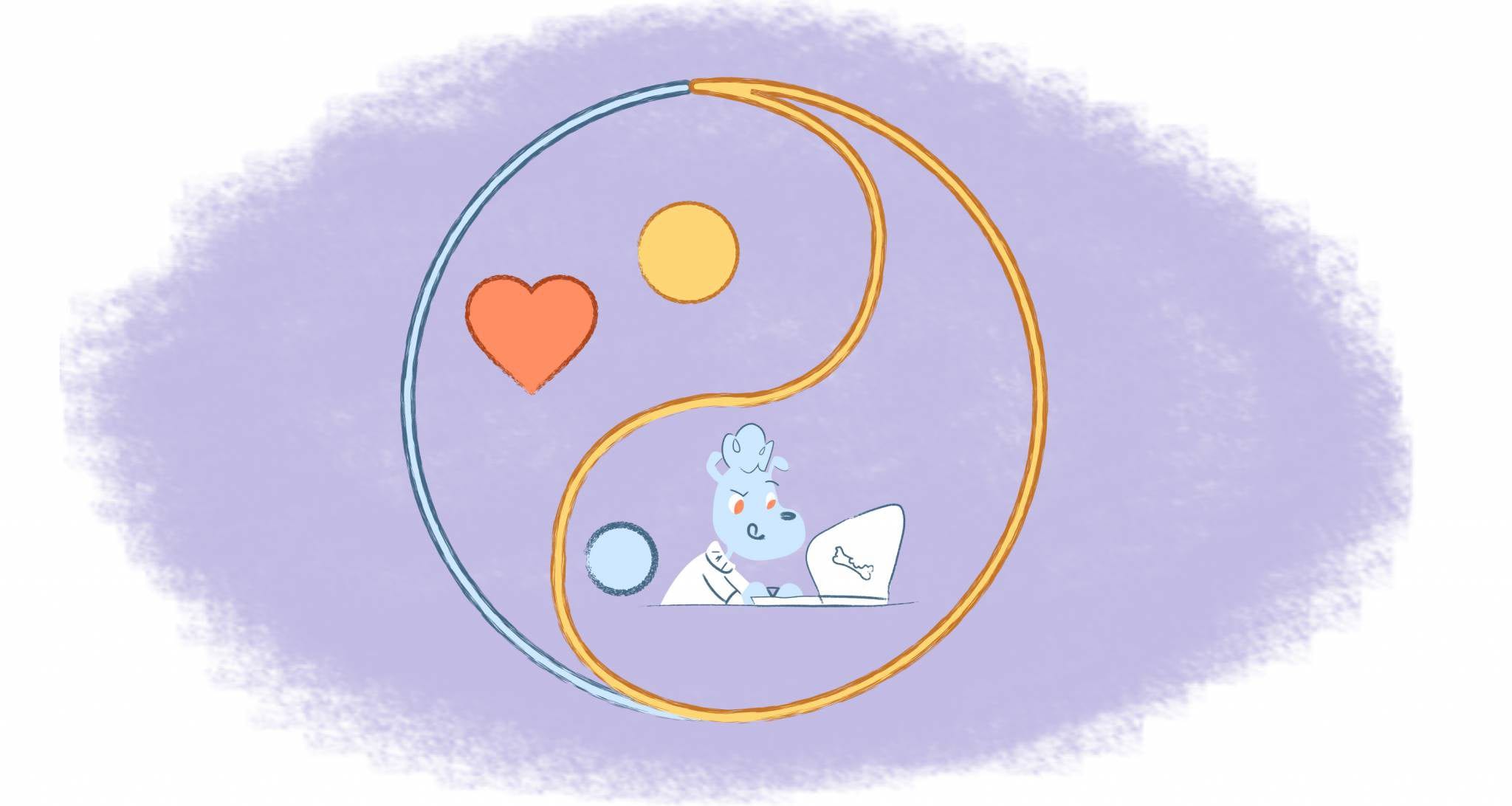

I recently went hiking in a state park. Besides spending some time outdoors, which helped me clear my head and burn some calories, I saw a sign posted outside the interpretive center. It simply read, “Today is the best day.” I’ve since taken this to be my daily mantra.
I think we all have the intention to make today the best day. Whether if it’s taking the time to do the things you enjoy or just sending good vides back out to the rest of the world. And, it also means being productive at work as opposed to just busy.
Of course, that’s easier said than done. When you have so many responsibilities and such a short amount of time to complete them, everything seems essential. That’s why learning how to prioritize your work is a skill everyone needs to learn. It ensures that you spend the right energy and focus on the right activities at the appropriate time.
The problem is, you often fall into the urgency trap. Instead of tackling something that is helping you move closer to your goals, you end up wasting time on things that seem important. While these are tasks that need to be addressed, they don’t need to be done ASAP. Some of them may not deserve your attention at all.
With that said, if you want to be more productive, get the most out of your time, and prevent problems like missed deadlines, then you must perfect prioritization. And, here are some of the ways that you can accomplish that challenge.
Create a master list and analyze it.
The first step in prioritizing your work is to collect a list of all your tasks. It doesn’t matter if you jot these down in a notepad, Word Doc, or to-do-list app. The idea is to have everything that needs to get done in one location that can be easily accessed.
The second step is to review these tasks and whittle them down to the essential. That may seem like a lot of work upfront. But, this helps you rate your functions so that you spend time on what matters. Even better, it allows you also to eliminate certain tasks altogether.
Delete, Delegate, Defer, or Do?
Personally, I find that the 4Ds of time management to be most useful here. It’s a simple technique where you have four options to narrow down your list:
- Delete. Sometimes this is referred to as “drop.” But the idea is the same. Any time commitments that are no longer necessary or aren’t crucial to the big picture should be scrapped. A perfect example of this is the lengthy and unproductive meetings you have in your schedule.
- Delegate. These are the activities that need to be done. But, just not by you. Instead, they should be assigned to someone else. For instance, I’m familiar with the necessary coding. However, I’m not an expert. If my website or app crashed, it’s just worth the money hiring a pro who can fix the problem faster than I ever could.
- Defer. These are essential tasks that can be delayed until another time. Let’s say that you an important meeting at the end of the month. You need to create and send an agenda. But, considering that the event three weeks away, that’s something you don’t need to do today.
- Do. Here is where you, in the words of Nike, “just do it.” It could be a task that only takes two-minutes to wrap-up. Or, it’s one that needs your attention sooner than later, like anything with a due date.
Will this solve all of your prioritization issues? Not necessarily. But, it can remove at least some of your work off your plate. And, now that you have a much leaner list, you can begin to start successfully prioritizing your work.
Adopt a prioritization method.
There is no such thing as a one-size-fits-all prioritization method. It depends on your own personal style. But, here are seven techniques that you could try out until you find the one that works best for you.
Eat the frog first.
InThe 4-Hour Workweek, Tim Ferriss wrote, “Being busy is most often used as a guise for avoiding the few critically important but uncomfortable actions.” Often times, these are the most difficult tasks that you aren’t looking forward to. And, as a result, we procrastinate on them. The funny thing is that they also happen to be your most important.
Instead of putting these obligations on the back burner, take the advice of Mark Twain and eat the frog first thing in the morning. “And if it’s your job to eat two frogs, it’s best to eat the biggest one first.” Now that the worst is behind you, the rest of the day will seem easy in comparison.
Also, since we usually have the most energy several hours after waking uP, it just makes more sense. Why try to force yourself to do something you dread when you’re exhausted at the end of the day.
Focus on your MITs.
Perhaps one of the simplest ways to prioritize your work is to focus only on the most critical tasks that you would like to accomplish for the day. You can jot these down during your evening routine or first thing in the morning. Just note that your MITs should only be between one to three items.
“And here’s the key to the MITs for me: at least one of the MITs should be related to one of my goals,” suggests Leo Babuta. “While the other two can be work stuff (and usually are), one must be a goal next-action. Goal centered ensures that I am doing something to move my goals forward that day.”
And, just like eating that frog, it’s best to do your MITs in the morning. “If you put them off to later, you will get busy and run out of time to do them,” adds Babuta. “Get them out of the way, and the rest of the day is gravy!”
Separate the urgent from the important using the Eisenhower Matrix.
Inspired by former U.S President Dwight D. Eisenhower, who once said “I have two kinds of problems: the urgent and the important. The urgent are not important, and the important are never urgent,” this is where you place all of your tasks into a four-quadrant box. You then organize them by:
- Urgent and important: These are the things that need to be done right now.
- Important, but not urgent. Decide when it’s best to do these and schedule them.
- Urgent, but not important. These can be handed off to someone else.
- Neither urgent or important. Drop these from your to-do-list and calendar.
Prioritize daily tasks with the Ivy Lee Method.
Developed in 1918 by productivity consultant Ivy Lee, this is a simple trick to help you prioritize your daily work.
- At the end of each day, write down the six most important things you need to accomplish tomorrow. Do not write down more than six tasks.
- Prioritize those six items in order of their true importance.
- When you arrive tomorrow, concentrate only on the first task. Work until the first task is finished before moving on to the second task.
- Approach the rest of your list in the same fashion. Move any unfinished items to a new list of six tasks for the following day.
- Repeat this process every working day.
As I explained in a previous Entrepreneur article, “The Ivy Lee Method is so effective because by planning your day the night before, you reduce decision fatigue and reserve your energy for your most meaningful work.” What’s more, “you know exactly what you’ll be working on all day instead of wasting valuable time and energy making decisions in the morning.”
Assign a value to your work with the ABCDE Method.
If you need a hack for knowing the true importance of a task, I recommend Bryan Tracy’s ABCDE method.
“You start with a list of everything you have to do for the coming day,” explains Tracy. “Think on paper. Once you have a list of all of the tasks you must complete, start the ABCDE method.”
- “A” is assigned to your most important tasks.
- “B” are items that need to be done but only have mild consequences.
- “C” are tasks that would be nice to get to. But, if you don’t, there are no repercussions.
- “D” is anything that can be delegated.
- “E” is for eliminating.
For every letter, also assign a number to it so that you know where to start. For example, an A-1 task would be “your biggest, ugliest frog.” It just adds multiple layers of prioritization to your work.
Follow the Pareto Principle.
Also known as the 80/20 rule, this was developed by the Italian economist and sociologist Vilfredo Pareto. As Choncé Maddox explains for Calendar, this rule “clearly states that 80% of your results come from 20% of your efforts.”
How does this help you prioritize your work? Well, according to toChoncé, “If you’ve found that 20% of your effort is resulting in 80% of your results, you’ll want to prioritize and improve that 20% margin.” Knowing that you should take “care of it first when you begin your workday.” Need a place to start? You could ask questions like, “Are there any tasks that would make you feel relieved by accomplishing them, no matter what else happened during the day?”
Also, don’t get hung up on the exact numbers here. The point is that you should spend most of your time on the handful of activities that deliver the most results.
Chunking.
Chunking is fairly straightforward. It’s where you block out specific times in your calendar for undisturbed work. Ideally, these would be your most important tasks for the day that have been scheduled around when you’re most productive. As an example, if your peak productive hours are from 9 AM to 11 AM, then that would box out that time for devouring your frog.
During this timeframe, this would be the only thing that you’re focused on. To aid you in this pursuit, you would turn off smartphone notifications and close your office to eliminate distractions. And, most importantly, don’t forget to take frequent breaks, like around every hour. It’s the best way to stay fresh throughout the day.
Final words of advice.
When you prioritize your work, you’ll be confident that each day will be the best one ever. But, even if you’ve learned to no longer fall into that urgency trap, there are a couple of things to keep in mind:
- Be flexible. Fires will have to put out. Your priorities will change over time. And, no matter how organized you are, the unexpected will always rear its ugly head. Work on becoming more adaptable so that you can roll with the punches.
- Break large tasks into smaller pieces. It can be overwhelming when jumping into larger tasks and projects. Breaking them down into more manageable sections can help you get started. It also lets you focus on what needs your attention right now.
- Be realistic. In a perfect world, you would be able to knock out your entire to-do-list in one day. Realistically, you’ll probably only be able to get to a handful of them. Understand how much you can actually get done in one day and move the less critical items to another date.
- Manage distractions and interruptions. No matter how hard you try, these are inevitable. Sure. Turning off your notifications is a start. But, what about addressing an unforeseen emergency? Add some blank spaces in your calendar so that you have time in your day to handle this.
- Ask for help. Finally, don’t hesitate to ask others for help. Whether if that’s delegating some of your work or asking for feedback on what’s most important.











John Rampton
John’s goal in life is to make people’s lives much more productive. Upping productivity allows us to spend more time doing the things we enjoy most. John was recently recognized by Entrepreneur Magazine as being one of the top marketers in the World. John is co-founder of Calendar.